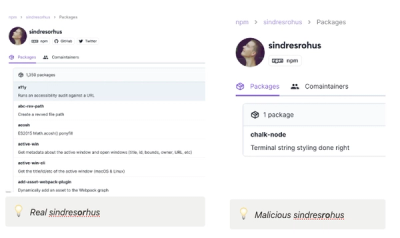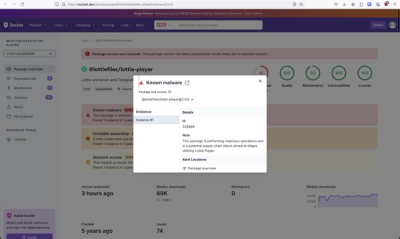Horseman
Horseman lets you run PhantomJS from Node. It has a chainable API, similar to jQuery.
Horseman is similar to, and is forked from, Nightmare. The primary difference is that controlling the flow of your program is simpler.
Additionally, Horseman automatically loads jQuery onto each page, which means you can use it inside your evaluate and manipulate functions automatically.
Installation
- Install Node, if you haven't already:
http://nodejs.org/
- Install PhantomJS:
http://phantomjs.org/download.html
- NPM install Horseman:
npm install node-horseman
Example
Search on Google:
var Horseman = require('node-horseman');
var horseman = new Horseman();
var numLinks = horseman
.open('http://www.google.com')
.type('input[name="q"]', 'github')
.click("button:contains('Google Search')")
.waitForNextPage()
.count("li.g");
console.log("Number of links: " + numLinks);
horseman.close();
For longer examples, check out the Examples folder.
API
new Horseman(options)
Create a new instance that can navigate around the web.
The available options are:
clientScripts an array of local javascript files to load onto each page.timeout: how long to wait for page loads or wait periods, default 5000 ms.interval: how frequently to poll for page load state, default 50 ms.port: port to mount the phantomjs instance to, default 12401.weak: set dnode weak option to false to fix cpp compilation for windows users, default true.loadImages: load all inlined images, default true.ignoreSSLErrors: ignores SSL errors, such as expired or self-signed certificate errors, default true.sslProtocol: sets the SSL protocol for secure connections [sslv3|sslv2|tlsv1|any], default any.webSecurity: enables web security and forbids cross-domain XHR, default true.
Cleanup
Be sure to .close() each Horseman instance when you're done with it!.
####.close()
Closes the Horseman instance by shutting down PhantomJS.
Navigation
.open(url)
Load the page at url.
.back()
Go back to the previous page.
.forward()
Go forward to the next page.
.reload()
Refresh the current page.
.cookies([object|array of objects])
Without any options, this function will return all the cookies inside the browser.
var cookies = horseman
.open('http://httpbin.org/cookies')
.cookies();
console.log( cookies );
You can pass in a cookie object to add to the cookie jar.
var cookies = horseman
.cookies({
name : "test",
value : "cookie",
domain: 'google.org'
})
.open('http://httpbin.org/cookies')
.cookies();
console.log( cookies );
You can pass in an array of cookie objects to reset all the cookies in the cookie jar (or pass an empty array to remove all cookies).
var cookies = horseman
.cookies([
{
name : "test2",
value : "cookie2",
domain: 'httpbin.org'
},
{
name : "test3",
value : "cookie3",
domain: 'httpbin.org'
}])
.open('http://httpbin.org/cookies')
.cookies();
console.log( cookies.length );
.userAgent(userAgent)
Set the userAgent used by PhantomJS. You have to set the userAgent before calling .open().
.authentication(user, password)
Set the user and password for accessing a web page using basic authentication. Be sure to set it before calling .open(url).
new Horseman()
.authentication('myUserName','myPassword')
.open('http://www.mysecuresite.com');
.viewport(width, height)
Set the width and height of the viewport, useful for screenshotting. You have to set the viewport before calling .open().
Evaluation
Evaluation elements return information from the page, and end the Horseman API chain.
.title()
Get the title of the current page.
.url()
Get the url of the current page.
.visible(selector)
Determines if a selector is visible, or not, on the page. Returns a boolean.
.exists(selector)
Determines if the selector exists, or not, on the page. Returns a boolean.
.count(selector)
Counts the number of selector on the page. Returns a number.
.html([selector])
Gets the html inside of an element. If no selector is provided, it returns the html of the entire page.
.text(selector)
Gets the text inside of an element.
.value(selector, [val])
Get, or set, the value of an element.
.attribute(selector, attribute)
Gets an attribute of an element.
.cssProperty(selector, property)
Gets a CSS property of an element.
.width(selector)
Gets the width of an element.
.height(selector)
Gets the height of an element.
.screenshot(path)
Saves a screenshot of the current page to the specified path. Useful for debugging.
####.evaluate(fn, [arg1, arg2,...])
Invokes fn on the page with args. On completion it returns a value. Useful for extracting information from the page.
var size = horseman
.open("http://en.wikipedia.org/wiki/Headless_Horseman")
.evaluate( function(selector){
return {
height : $( selector ).height(),
width : $( selector ).width()
}
}, ".thumbimage");
console.log( size );
horseman.close();
Manipulation
These functions change the page, and can be chained consecutively.
.manipulate(fn, [arg1, arg2,...])
Works the same as .evaluate(), but doesn't return a value, so it can be used without interrupting the Horseman API chain.
var count = horseman
.open("http://en.wikipedia.org/wiki/Headless_Horseman")
.count( selector );
console.log( count );
count = horseman
.manipulate( function( selector){
$(selector).each( function(){
$(this).remove();
})
}, selector)
.count( selector );
console.log( count );
.click(selector)
Clicks the selector element once.
.select(selector, value)
Sets the value of a select element to value.
.clear(selector)
Sets the value of an element to "".
.type(selector, text [,options])
Enters the text provided into the selector element. Options is an object containing eventType (keypress, keyup, keydown. Default is keypress) and modifiers, which is a string in the formation of ctrl+shift+alt.
.upload(selector, path)
Specify the path to upload into a file input selector element.
.injectJs(file)
Inject a javascript file onto the page.
Waiting
These functions for the browser to wait for an event to occur. If the event does not occur before the timeout period (configurable via the options), a timeout event will fire.
.wait(ms)
Wait for ms milliseconds e.g. .wait(5000)
.waitForNextPage()
Wait until a page finishes loading, typically after a .click().
.waitForSelector(selector)
Wait until the element selector is present e.g. .wait('#pay-button')
.waitFor(fn, value)
Wait until the fn evaluated on the page returns value.
Events
.on(event, callback)
Respond to page events with the callback. Be sure to set these before calling .open().
Supported events are:
initialized - callback()loadStarted - callback()loadFinished - callback(status)urlChanged - callback(targetUrl)navigationRequested - callback(url, type, willNavigate, main)resourceRequested - callback(requestData, networkRequest)resourceReceived - callback(response)consoleMessage - callback(msg, lineNumber, sourceId)alert - callback(msg)confirm - callback(msg)prompt - callback(msg, defaultValue)error - callback(msg, trace)timeout - callback(msg) - Fired when a wait timeout period elapses.
For a more in depth description, see the full callbacks list for phantomjs.
horseman
.on('consoleMessage', function( msg ){
console.log(msg);
})
Debug
To run the same file with debugging output, run it like this DEBUG=horseman node myfile.js.
This will print out some additional information about what's going on:
horseman .setup() creating phantom instance on port 12406 +0ms
horseman load finished, injecting jquery and client scripts +401ms
horseman injected jQuery +0ms
horseman .open: http://www.google.com +66ms
horseman .type() horseman into input[name='q'] +51ms
Tests
Automated tests for Horseman itself are run using Mocha and Should, both of which will be installed via npm install. To run Horseman's tests, just do npm test.
When the tests are done, you'll see something like this:
npm test
51 passing (29s)
License (MIT)
WWWWWW||WWWWWW
W W W||W W W
||
( OO )__________
/ | \
/o o| MIT \
\___/||_||__||_|| *
|| || || ||
_||_|| _||_||
(__|__|(__|__|
Copyright (c) John Titus john.titus@gmail.com
Permission is hereby granted, free of charge, to any person obtaining a copy of this software and associated documentation files (the 'Software'), to deal in the Software without restriction, including without limitation the rights to use, copy, modify, merge, publish, distribute, sublicense, and/or sell copies of the Software, and to permit persons to whom the Software is furnished to do so, subject to the following conditions:
The above copyright notice and this permission notice shall be included in all copies or substantial portions of the Software.
THE SOFTWARE IS PROVIDED 'AS IS', WITHOUT WARRANTY OF ANY KIND, EXPRESS OR IMPLIED, INCLUDING BUT NOT LIMITED TO THE WARRANTIES OF MERCHANTABILITY, FITNESS FOR A PARTICULAR PURPOSE AND NONINFRINGEMENT. IN NO EVENT SHALL THE AUTHORS OR COPYRIGHT HOLDERS BE LIABLE FOR ANY CLAIM, DAMAGES OR OTHER LIABILITY, WHETHER IN AN ACTION OF CONTRACT, TORT OR OTHERWISE, ARISING FROM, OUT OF OR IN CONNECTION WITH THE SOFTWARE OR THE USE OR OTHER DEALINGS IN THE SOFTWARE.



